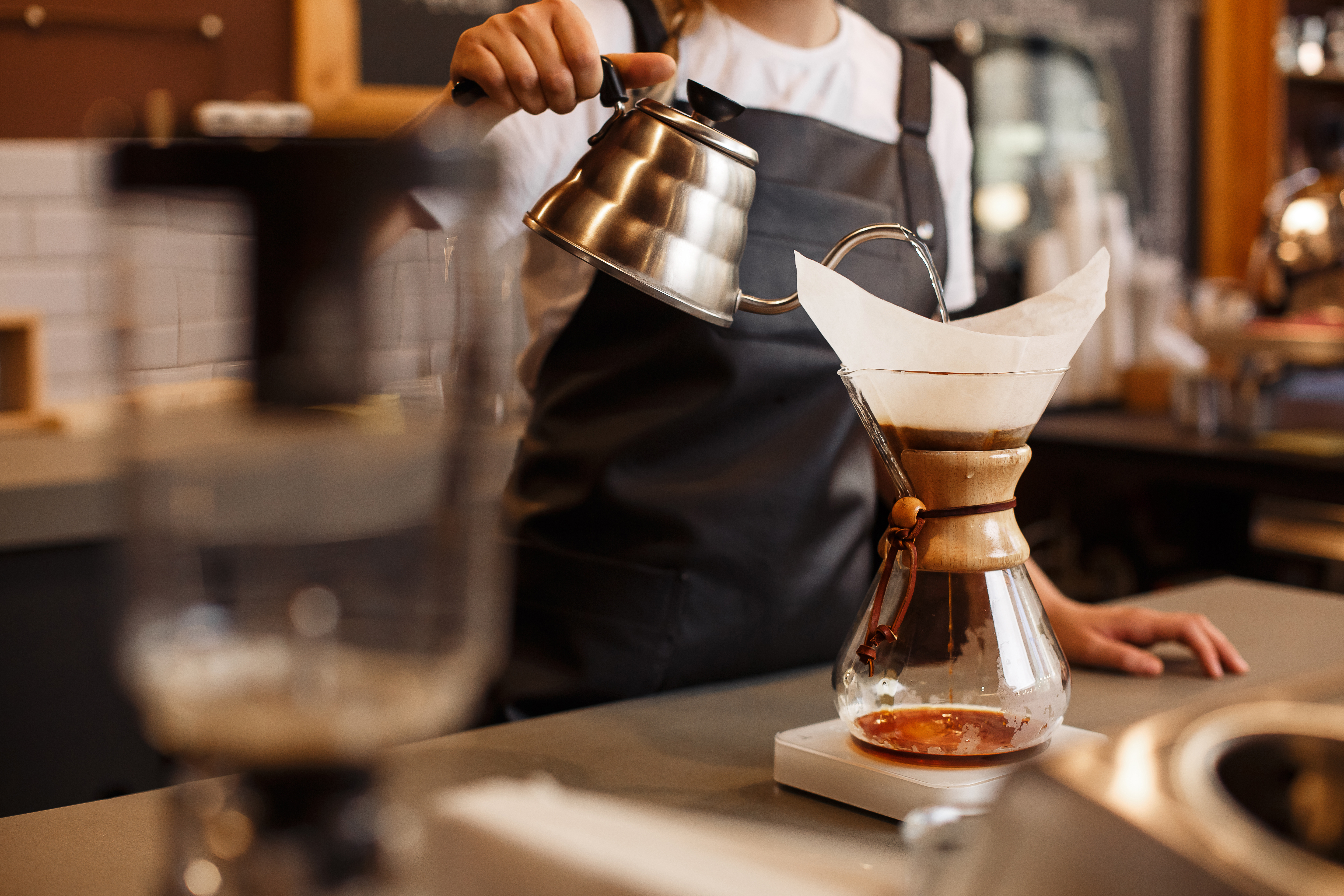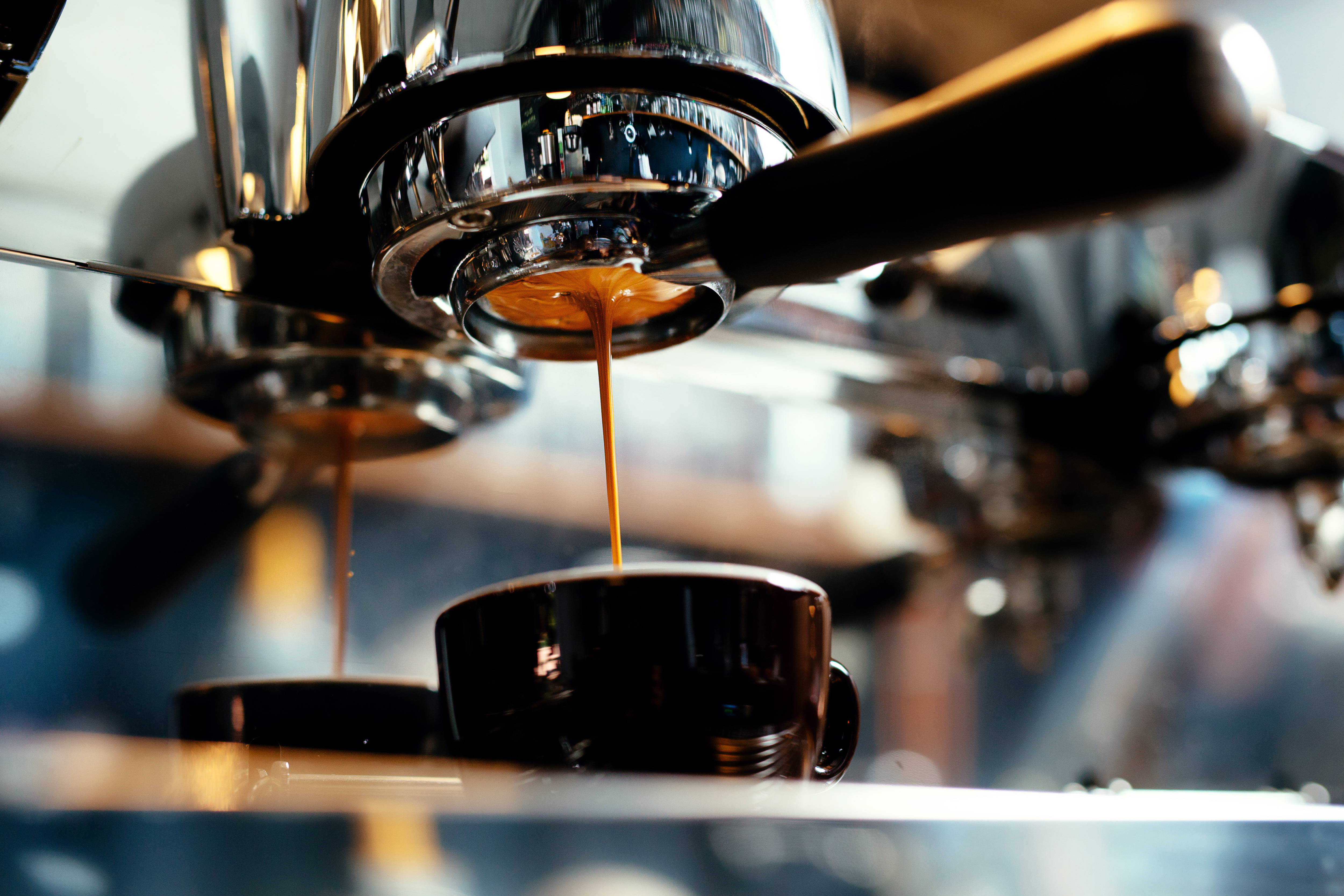What is filter coffee? Does it differ from espresso?
What comes to mind when you think of a cup of coffee? Is it an espresso, a latte, maybe a cafe macchiato, or is it a smooth, black filtered coffee? In this blog, we look at all things related to filter coffee, from choosing the right beans to buying the equipment.
What is filter coffee?
Filter coffee is made using a pour-over or drip method. Unlike an espresso which uses pressure to force the water through the coffee beans, filter coffee relies on gravity.
The hot water trickles through a bed of coffee and into a jug or carafe below. This extraction process is slower than using an espresso machine, but it results in a smoother cup of coffee that has a clean body and a rounded, simple flavour profile.
The taste is less intense, so it works well with single origin coffees, because it has the room to allow you to pick up on the subtle flavours that are hidden in the beans.
Espresso vs. filter coffee
We've mentioned already that espresso and filter coffee are made in different ways.
An espresso uses high pressure to extract the oils, sugar, and compounds from the beans, and this can only be achieved using a machine. Filter coffee takes much longer to pull the water through the beans, because it's relying on gravity to do the hard work.
These two brewing methods require different sized coffee grounds. While an espresso machine works best with finely ground coffee, you'll need a coarser grind to make a decent cup of filter coffee (imagine the size of sea salt).
If you try to make a filter coffee with grounds that are too fine, you'll end up with a sludgy mess that is undrinkable.
Unlike an espresso, you can make a rich, balanced cup of filter coffee at home without a machine using a simple pour-over technique. What you don't get with filter coffee is the versatility of an espresso, which can be used to make lots of other coffee drinks, such as latte, cappuccino, and many more.
Coffee beans for filtered coffee
To make it easy to find the right coffee for your preferred brewing method, all our coffee beans are sold in different grind sizes. You can choose from cafetière, filter, espresso, Turkish, or whole beans that you can grind at home yourself.
We've put together an edit of the best coffee beans for filtered coffee to help you make the perfect brew. For filter coffee, we highly recommend Ethiopian Yirgacheffe coffee beans.

Ethiopia Yirgacheffe
Ethiopia has a long history of growing coffee, and it's Africa's largest producer, exporting over 3 million bags of coffee every year. The country is split into regions or "zones" each with its own climate and terrain that results in a different flavour profile.
Yirgacheffe is a coffee-growing region in the south of the country, where the beans are grown at high altitude and then put through a wet processing method.
Coffee made with wet processed beans from Ethiopia Yirgacheffe has a vibrant, clean taste, that we think complements the slower brewing time of the filter method.
Expect a bright, fruity flavour with subtle floral aromas and a balanced acidity.
Sumatra coffee (Lintong)
For something different why not try Sumatran coffee – a single-origin coffee from Indonesia, where the conditions along the equator are perfect for growing Arabica coffee beans.
It's processed using a unique hulling method known as GilingBasah, which gives it a concentrated, full-bodied taste. You can expect earthy tones and side notes of cedar, with this medium-dark roast coffee.
Using a filter brewing process really allows the coffee's characteristics to shine through, and we think it works best with a Hario V60, which we'll look at next.
How to make filter coffee
You can make filter coffee using an electric drip-coffee maker which usually has a setting to turn on automatically and a hot plate under the jug to keep the coffee warm.
The‘pour-over method’ (or manual style)is just as good. For this, you’ll need to pour the water by hand over a bed of coffee and through a paper filter into a glass jug below.
Though it takes time, it's a worthwhile process, because what you're left with at the end is a smooth, balanced cup of coffee that doesn't cost a lot and you can enjoy at home.
When it comes to cost-effective equipment, we like the Hario V60.
This simple filter cone has ridges inside for better air flow, so you get a smoother extraction from your pour-over. You can buy this style of cone, and coffee filter papers to go with it, from Pumphrey's Coffee online.
If you're unsure what filter coffee equipment you need or you want advice on finding the right type of coffee, our experts are on-hand to help.

 Pound Sterling
Pound Sterling
